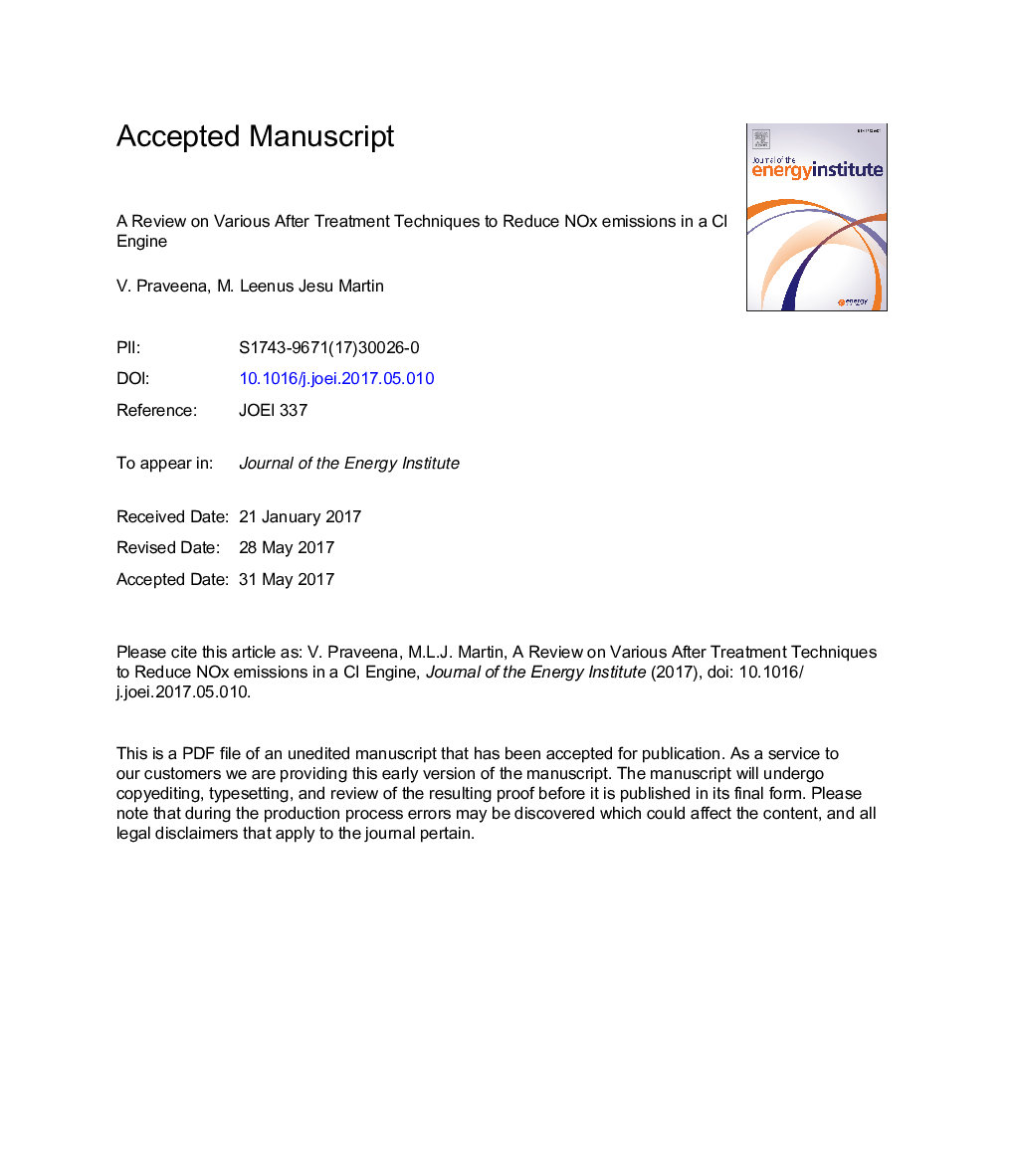| Article ID | Journal | Published Year | Pages | File Type |
|---|---|---|---|---|
| 8955759 | Journal of the Energy Institute | 2018 | 20 Pages |
Abstract
NOx emissions have always been a main concern in the development of diesel engines. This paper summarizes the studies about NOx emission reduction in diesel engines. The need for meeting the stringent requirements with regard to NOx emissions in a diesel engine has led to the development of a range of after treatment techniques. After treatment methods are required to reduce NOx emissions that cannot be controlled by fuel composition and combustion phenomena. Current after treatment techniques that are being employed are Selective Catalytic Reduction (SCR), Lean NOx Trap (LNT) and SCR Filter (SCRF). The benefits and constraints of different types of SCR are discussed. Urea SCR is a prominent well proven technology. Urea SCR produces 96-99% conversion efficiency with the help of a reductant NH3. The operating parameters such as nature of catalyst, temperature range of catalyst, flow of DEF (Diesel Exhaust fluid) to injector and mixing of NH3 and NOx are discussed. Hybrid SCR such as Cu-SCRÂ +Â Fe-SCR, SCRÂ +Â LNT moderates fuel consumption and augments the catalytic activity at low temperature. SCRF has low cell density (200-300Â csi vs 400-600Â csi for SCR), and also has lower deNOx efficiency for a number of reasons. Pre-stored NH3 and Preheating helps in low temperature reaction of SCRF. Technical problems in aqueous urea systems have led to the evolution of solid SCR system (SSCR). This review incorporates the study of solid ammonium salts decomposition, temperature range of the salts and infrastructure required for SSCR.
Keywords
Related Topics
Physical Sciences and Engineering
Energy
Energy Engineering and Power Technology
Authors
V. Praveena, M. Leenus Jesu Martin,
